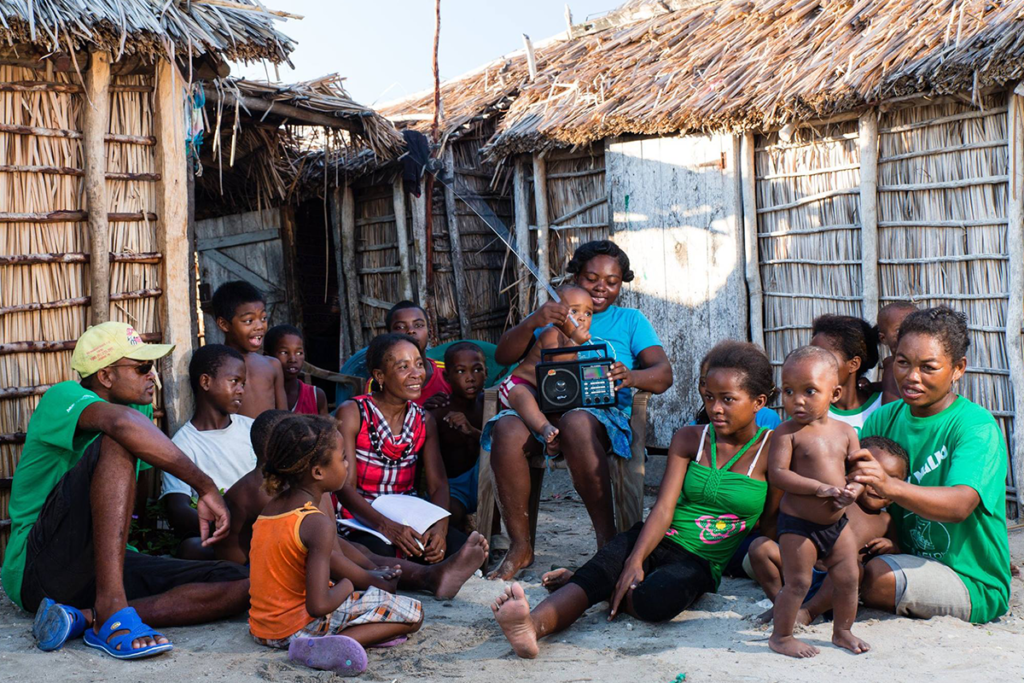Photo credit: Garth Cripps/Blue Ventures; used with permission
You may have recently noticed an uptick in conversations within development circles on this underlying theme: A full realization of the new Sustainable Development Goals (SDGs) requires critical changes in what we do based on understanding the significant linkages between social, economic and environmental sectors. Intuitively, that seems fairly sensible. These linkages suggest that we should be using integrated approaches. But what do we know about the effectiveness of intentionally integrated approaches to development?
Surprising to some, a significant amount of evidence on multi-sector programs is already available to help inform key decisions about effectively implementing integrated approaches. Because ‘integration’ is such a broad term that implies a very diverse range of approaches, sorting through the high volume of evidence can quickly become overwhelming. My job is to do just that, including gathering, synthesizing and interpreting this research. In this post, I share a few of my very favorite examples of research that provide evidence on the effectiveness of integrated approaches.
The first example, an evaluation of a population, health and environment (PHE) project, leads the way for rigorous evaluation of this innovative approach to integration. I like the second example because of its focus not just on measuring an integrated intervention’s outcomes but also on publishing additional information on other aspects, including design, process and cost. My third example is the body of research on conditional cash transfers in Mexico, as this research was ground-breaking when it started and continues to be extremely influential. (FYI, if you’re hoping to find a quick summary on where the overall evidence base stands for integration, this is the wrong place. See here instead).
Admittedly the first example is one of my favorites because I believe the program approach evaluated is one of the most promising and important in integrated development. In an exciting new paper, Robson and colleagues describe the impact of an integrated PHE project. Their organization, Blue Ventures, was founded as a marine conservation program. Yet after listening to several of the coastal communities they work with in Madagascar, they came to understand the key linkages people perceived between access to key health services like family planning and their ability to engage productively in economic and environmental activities. In response, Blue Ventures then built reproductive health services directly into their ongoing marine conservation program. The study revealed large changes in voluntary contraceptive use after the introduction of the integrated approach, as compared to the high levels of unmet need for family planning at the start of their research. The more objective reason this paper makes my list is its valuable contribution to what is a relatively small (published) evidence base for PHE when compared to how often the integrated approach is implemented in practice.
Next, very rarely (read: never) do you see the methodological challenges related to the evaluation of multi-sector programs articulated in peer-reviewed journal articles. Therefore, the fact that Donald C. Cole and his colleagues do precisely that in their paper, “Planning an integrated agriculture and health program and designing its evaluation: Experience from Western Kenya,” makes it easy to love. Specifically because integrated approaches are often more complex in design and implementation than single-sector ones, their evaluation may not only require more sophisticated methods, but also often bring together different cultures of research and evaluation between the sectors involved. These authors take painstaking care (and valuable journal real estate) to unpack what they learned from the complicated experience of designing a multi-sector program and also crafting an assessment that would do it justice. It’s a must-read for anyone gearing up to do the same.
The final example is one of my favorites because in contrast to a single study it represents a whole family of evaluations that proliferated from a rare opportunity provided for researchers to use an experimental design while evaluating a large social support program. Due to preliminary budget constraints matched with an admirable (and forward-thinking) interest in data on impact, the Mexican government smartly teamed up with researchers to use a phased roll out plan that supported a randomized evaluation of a new poverty reduction approach. The Prospera program in Mexico (initially called Progresa and then Oportunidades) began in 1997. Prospera is in essence an integrated education, health and poverty program as the government provides cash transfers to families with children in exchange for regular school attendance, health visits and nutritional support. From the start, the multi-sector effects were promising, with the preliminary results from the first series of evaluations by the International Food Policy Research Institute showing that “after just three years, the poor children of Mexico in the rural areas where Progresa is currently operating are more likely to enroll in school, are eating more diversified diets, and getting more frequent health care.” Based on these promising results that were subsequently confirmed by additional evaluations, the program was maintained by subsequent political administrations and remains active today. Moreover, for more than a decade researchers have continued to use the robust datasets for dozens of analyses unpacking its various and nuanced sectoral impacts (a quick search for “Progresa” and/or “Oportunidades” in 3ie’s Impact Evaluation Repository will take you to the studies). The strong body of evidence behind it has led to replication and adaptation of this integrated model in dozens of other countries.
If these evaluations of multi-sector development initiatives leave you craving more, this Integrated Development Evidence Map can tip you off to many others. As you dig in, I’d love to hear which ones are your favorite and why!




